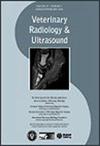关于小动物兽医临床医生使用超声波的调查
IF 1.3
2区 农林科学
Q2 VETERINARY SCIENCES
引用次数: 0
摘要
本研究旨在确定小动物兽医目前使用超声波的情况。共有 1216 名小动物兽医对通过兽医信息网向其所有成员进行的电子调查做出了回应。调查生成了描述性统计数字;并进行了有限的推论性统计来研究具体的关系。84%的受访者可以使用超声设备,86%的受访者表示每周使用设备多次。最常见的用途是协助膀胱穿刺术(93%)和腹腔穿刺术(71%)、妊娠诊断(69%)、有限的腹部评估(63%)、协助胸腔穿刺术(59%)和有限的胸部评估(52%)。89% 的受访者接受过一些正规的超声培训,其中最常见的是继续教育课程。大多数受访者(52%)表示接受过 25 小时以下的培训。此外,88% 的受访者认为,兽医学生在毕业前接受超声波培训极为重要或非常重要。根据这项调查,大多数小动物从业人员通常使用超声波进行有限的检查,他们对膀胱的超声评估和穿刺以及体腔积液的检测和穿刺最有信心。由于大多数受访者接受过≤25小时的超声波培训,通常是在研究生课程中获得的,因此可能需要在兽医课程中扩大标准化的基础超声波培训。本文章由计算机程序翻译,如有差异,请以英文原文为准。
A survey of the use of ultrasound by small animal veterinary clinicians
This study aimed to determine the current use of ultrasound amongst small animal veterinarians. A total of 1216 small animal veterinary practitioners responded to an electronic survey that was administered through the Veterinary Information Network to all its members. Descriptive statistics were generated; limited inferential statistics were performed to examine specific relationships. Eighty‐four percent of respondents had access to an ultrasound unit, and 86% of respondents reported using their unit multiple times per week. The most common uses were assistance with cystocentesis (93%) and abdominocentesis (71%), pregnancy diagnosis (69%), limited abdominal evaluation (63%), to aid in thoracocentesis (59%), and limited thoracic evaluation (52%). Eighty‐nine percent of respondents received some formal training in ultrasound, most commonly from continuing education courses. Most respondents (52%) reported receiving ≤25 h of training. Additionally, 88% of respondents believed it was either extremely or very important for there to be ultrasound training for veterinary students prior to graduation. Based on this survey, most small animal practitioners commonly use ultrasound for limited examinations, being most confident in the sonographic evaluation and centesis of the bladder and for the detection and centesis of effusion in a body cavity. With most respondents having ≤25 h of training in ultrasound, typically obtained in postgraduate courses, an expansion in standardized basic ultrasound training within the veterinary curriculum may be warranted.
求助全文
通过发布文献求助,成功后即可免费获取论文全文。
去求助
来源期刊

Veterinary Radiology & Ultrasound
农林科学-兽医学
CiteScore
2.40
自引率
17.60%
发文量
133
审稿时长
8-16 weeks
期刊介绍:
Veterinary Radiology & Ultrasound is a bimonthly, international, peer-reviewed, research journal devoted to the fields of veterinary diagnostic imaging and radiation oncology. Established in 1958, it is owned by the American College of Veterinary Radiology and is also the official journal for six affiliate veterinary organizations. Veterinary Radiology & Ultrasound is represented on the International Committee of Medical Journal Editors, World Association of Medical Editors, and Committee on Publication Ethics.
The mission of Veterinary Radiology & Ultrasound is to serve as a leading resource for high quality articles that advance scientific knowledge and standards of clinical practice in the areas of veterinary diagnostic radiology, computed tomography, magnetic resonance imaging, ultrasonography, nuclear imaging, radiation oncology, and interventional radiology. Manuscript types include original investigations, imaging diagnosis reports, review articles, editorials and letters to the Editor. Acceptance criteria include originality, significance, quality, reader interest, composition and adherence to author guidelines.
 求助内容:
求助内容: 应助结果提醒方式:
应助结果提醒方式:


